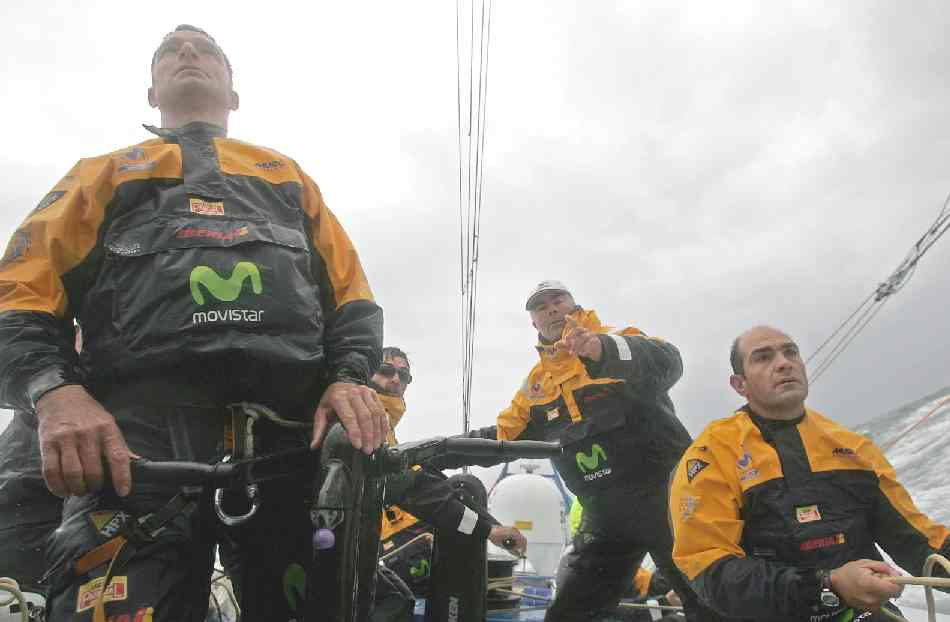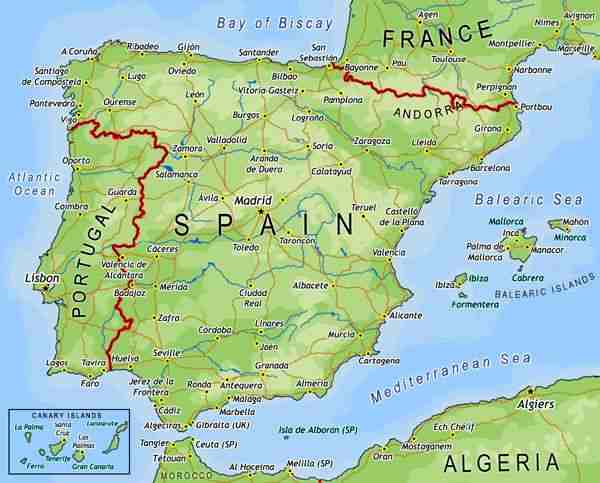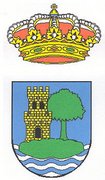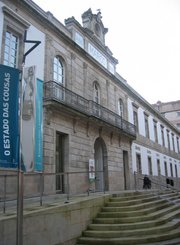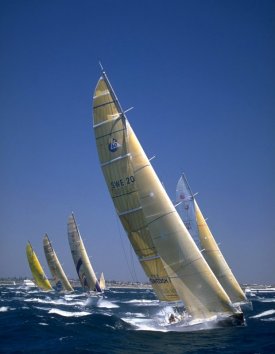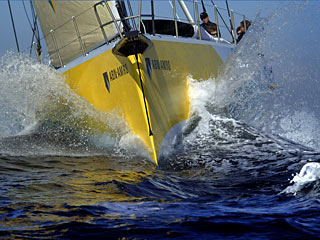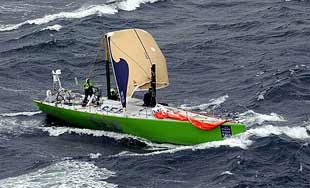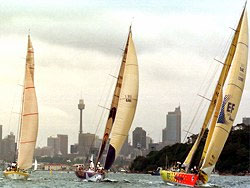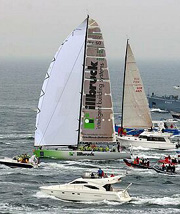|
THE VOLVO OCEAN RACE 2005-2006 - VIRGO, SPAIN |
|||||||||||||||||||||||||||||||||||||||||||||||||||||||||||||||||||||||||||||||||||||||||||||||||||||||||||||||||||||||||||||||
|
HOME SITE INDEX CATAMARAN HULL SOLAR PANELS ELECTRIC MOTORS BATTERIES CREW EXPEDITION SPONSORS |
|||||||||||||||||||||||||||||||||||||||||||||||||||||||||||||||||||||||||||||||||||||||||||||||||||||||||||||||||||||||||||||||
|
Traditionally
the Volvo Ocean Race race has always begun in the UK. The
first major change comes with the inclusion of Vigo as the start
port, details of which will be published nearer to the start of
the event.
Leg three
will take the fleet to Wellington for a pit-stop. Instead of the
rolling start as seen in the Hobart pit-stop in the last edition
of the race, the boats will start from Wellington as a fleet,
beginning leg four,
which takes them back into the Southern Ocean and around the
infamous Cape Horn, which will
also be a scoring gate, before the hot
slog up to the leg finish in Rio de Janeiro, Brazil. South
America has been a part of the race since its conception in
1973, and we are pleased to continue the tradition of stopping
in this important world market place.
Virgo - West coast Spain, top left
ABOUT VIRGO
Vigo is the largest city of the Galicia region and Pontevedra province in northwestern Spain. As of 2003 census, the population of the city of Vigo proper was 292,566, and the population of the entire urban area was estimated to be 420,672, ranking as the 14th-largest urban area of Spain.
It is the first industrial area in Galicia. There are automobile industry, shipyards and auxiliary industry. Situated in Vigo is Galicia's leading employer, PSA Peugeot Citroën Group, which in 2003 produced a total of 473,000 vehicles, of which more than 88% were sold outside Spain.
Vigo is the largest fishing port in Europe, and the home port of the world's largest fishing company, Pescanova. Vigo has been chosen to be, in the nearest future, the headquarter of the European Fisheries Agency.
"La movida viguesa" was an hedonistic cultural movement that took place in Vigo during the 80s triggered by the explosion of liberties after the death of dictator Franco. Most important artists of this postmodern movement were musicians; particularly new wave bands such as Siniestro Total, Golpes Bajos, Aerolineas Federales, Semen Up or Os Resentidos.
University of Vigo, which earlier was a branch of University of Santiago, is situated in a mountainous area outside the city. The locally produced award-winning feature movie Mondays In The Sun (original title Los lunes al sol) evocatively depicts the life of several men who have lost their work at the port.
External links
Vigo é a maior cidade da Comunidade Autónoma de Galiza, co maior porto de pesca de Europa e un dos meirandes do mundo. Está ubicada na provincia de Pontevedra e a súa poboación é 292.566 persoas segundo Padrón municipal de 2003, ós que habería que incrementar os da súa zona de influencia máis direita.
Historia
Durante longo tempo, no periodo post-latino e medieval, estivo integrada na denominada Terra de Turónio. Esta denominación comprendía as terras do convento bracarense baixo dominio galego despois da independencia do Reino de Portugal no século XII.
XeografíaNa Ría de Vigo hai que destacar as Illas Cíes á entrada e ó fondo as bateas mexilloneiras e a Ponte de Rande. Na marxe dereita da ría aséntase a Cidade Olívica e na marxe esquerda a Península do Morrazo. A cidade caracterízase xeográficamente por estar o seu centro no monte do Castro, o que fai que moitas das rúas dos barrios centrais sexan costas moi pronunciadas. Este monte está moi próximo á ría que leva o nombre da cidade (Ría de Vigo).
Segundo os datos do censo, no ano 1910 había ó redor de 30.000 habitantes, fronte ós case 300.000 actuais, que se reparten polas diferentes parroquias da cidade. EconomíaVigo basea a súa economía no porto e na empresa automovilística PSA Peugeot-Citroën. No 2004 o tráfico total foi de 4.730.399 toneladas (un 5,43% máis que no 2003) o que o consolida coma o porto pesqueiro máis importante de europa. O cruceiro Queen Mary 2 fai escala no peirao de trasatlánticos de Vigo. Tráfico do porto durante o 2004 (en toneladas):
DeporteNo campo do deporte, son especialmente importantes o equipo de fútbol Real Club Celta e o de balonmán Octavio Pilotes Posada. No campo do alpinismo, cabe salientar á alpinista Chus Lago. Destaca tamén a patinadora Tamara Valderrama.
Museos
Museo do Mar de Galicia
Av. Atlantida, 160 . Vigo . C.P 36208 . Tlf: 986247750 . Fax : 986247748 Emprazado na beira da ría, en Punta de Muíño (parroquia de Alcabre), dende el tense unha vista privilexiada da ría. O seu contido museístico versa sobre o mar e a súa relación con Galiza e as xentes que dependen de el. O edificio no que está aloxado foi deseñado polos arquitectos Aldo Rossi e César Portela, se ben o primeiro faleceu antes de comezar as obras.
Museo Municipal «Quiñones de León»
Situado no antigo Pazo de Lavandeira, que fora doado polo Marqués de Alcedo en 1925, está dividido en tres áreas; na planta baixa está decorada simulando o aspecto do pazo cando estaba habitado, outra área está adicada a arte galega contemporánea e, finalmente está a área de prehistoria e arqueleoxía da Vigo e a súa bisbarra.
Museo Etnográfico Liste
Estación marítima
Museo de Arte Contemporánea (MARCO)
Rúa do Príncipe, 54 . CP: 36202 . Vigo . Telf: 986 11 39 00/11 . Fax: 986 11 39 01 O edificio constituiu na súa orixe un cárcere. Anos máis tarde sería rehabilitada de forma que o 13 de Novembro de 2002 volvería abrir as súas portas como museo. Consta de dúas plantas e un espacio anexo. Alberga exposicións artísticas en diversos soportes tales como fotografía, escultura ou pintura. Ademáis destas mostras tamén acolle diversas actividades didácticas.
Porta principal do MARCO
Casa das ArtesCasa Galega da Cultura
Véxase tamén
Ligazóns externas - InstituciónsAsociacións veciñais Turismo e guías Feiras e exposicións Museos Tempo de Lecer Comercio Compañías Personais Outras
ABOUT THE VOLVO OCEAN RACE
The Volvo Ocean Race is the ultimate mix of world class sporting competition and on the edge adventure. It takes 8 months, covers 31,000 nautical miles of treacherous seas over 9 legs, in the process visiting 10 ports around the world.
The teams comprise professional sportsmen and women at the top of their game. The race requires their utmost skill, physical endurance and competitive spirit as they race from continent to continent in an easterly direction around the world.
Round The World Yacht Race 2005 - 2006:
The Volvo Ocean Race is a marathon event. For nine months, world-class racers battle each other around the globe over some 32,700 miles (52,600 kilometers). Participants spend weeks at a time driving their boats to the limit 24 hours a day. They sacrifice sleep, privacy, fresh food, and other comforts to win each leg. But what happens when they reach the next port of call?
The race doesn't stop-it just shifts gears. Weary sailors get a chance to rest and prepare for the next leg, while the shore crew swings into action. After weeks of demanding action, and a spartan existence at sea, the first things these exhausted sailors crave are basic human needs. The event will start on November 5, 2005 with an inport race in Sanxenxo, Galicia, Spain.
The race track will continue to follow the traditional route of the old clipper ships, sailing around the world with the prevailing winds. An exciting new feature introduced for this event is a number of scoring gates and pit stops around the world, where the fleet will be able to score points, which will count towards the final score.
RACE HISTORY
It is unlikely that Colonel Bill Whitbread, of the brewing family and Admiral Otto Steiner, of the Royal Naval Sailing Association, ever envisaged the magnitude of the event they conceived 'over a pint' of beer nearly 30 years ago. Although a 'round the world yacht race' had been considered throughout the last century, it needed the financial support and organisational expertise which Whitbread and the RNSA were able to put together. The first Whitbread Round the World Race, which got underway in September 1973, featured yachts that were little different from those cruising around the Mediterranean at the time. Since then, the ocean racing yacht has developed into a high-tech state-of-the-art speed machine, with little comfort spared for the crew but with leading-edge technology.
This new technology has also completely altered the concept of ocean racing. In the past, skippers and navigators had little idea of where their rivals might be as they ploughed day in day out through the vast oceans. During the first race, communication between the fleet and organisers was based on a weekly position report to a local coast guard, but from 1993-94, satellite equipment enabled the yachts to file their position every six hours. This meant that although boats were not necessarily in sight of each other, rival skippers were able to follow, and track, every move when necessary. In effect, this vast ocean race, where yachts can race for days on end for thousands of miles and not once see another competitor, has become, in this sense, more like a fiercely fought dinghy race performed on any local stretch of water.
The Volvo Ocean Race simply could not have been a better sporting event, but, just as importantly, it also became a great media event. The payback in terms of media coverage was hugely successful for all the teams and their sponsors, which, for the future of the race, was imperative. Based on this overwhelming success, the management of Volvo Car Corporation and AB Volvo confirmed during the Gothenburg stopover that they would retain ownership of the event, which would be run again in 2005.
A Corinthian adventure 1973-74
When the first gun was fired on September 8 1973, 17 boats of sizes ranging from 80' to 32' from seven countries crossed the start line just east of Portsmouth Harbour, but only 14 were to complete the circumnavigation. Sir Alec Rose, who, five years previously, had sailed around the world, single-handed, stopping only twice, fired the first-ever starting gun. Only four legs were staged - Portsmouth to Cape Town; Cape Town to Sydney; Sydney to Rio de Janeiro and from Rio the fleet raced back to Portsmouth. The whole race lasted 144 days with the 77' Ketch, Great Britain II, skippered by Chay Blyth and crewed by paratroopers, first to finish on 9 April 1974.
|
|||||||||||||||||||||||||||||||||||||||||||||||||||||||||||||||||||||||||||||||||||||||||||||||||||||||||||||||||||||||||||||||
|
